Girls Explore Electrical and Computer Engineering During GLEE GAMES Camp
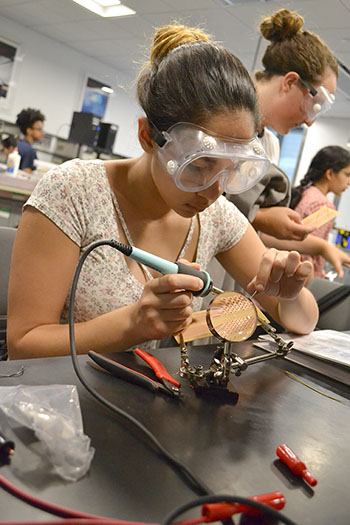
A GLEE camper works to solder her radio phone circuit
October 20, 2017
At the 2017 G.A.M.E.S. (Girls’ Adventures in Mathematics, Engineering, and Science) camp during the week of June 18–24, 14 students attended the GLEE (Girls Learning Electrical Engineering) portion of the camp. These 14 girls included 7 from the suburbs of Chicago, 4 from out of state, and even one international student from Turkey. GLEE allowed girls to get their hands on electrical engineering components in a week-long adventure in circuitry and solar power.
GLEE has been run by ECE (Electrical and Computer Engineering) professor Lynford Goddard for the past eight years. This year, his 14 students undertook a couple of projects to get them familiar with the core concepts of circuitry and electrical engineering.
The first project relates to something no high schooler could ever be without: their cell phones. The girls learn how to make a radio phone (an FM transmitter circuit), which works in a very similar fashion to a walkie talkie. The circuit transmits voice patterns into a voltage signal, amplifies the signal, and then radiates it out through the attached antenna. Anyone tuned into the right frequency can then use their own circuit to decode the signal back into a voice pattern, which can be played out through speakers.
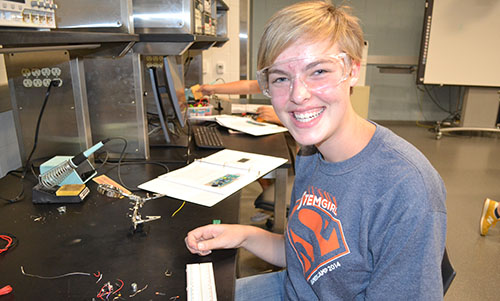
Above: A GLEE camper gears up to start building her radio phone.
Below: GLEE campers hard at work building their radio phone circuits.
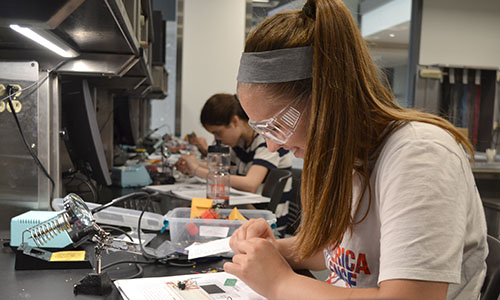
The girls also attended various classes covering a broad range of topics including solar power, algorithms, nanotech, and optics. They also got to tour a few university labs and buildings related to ECE. This year, they were generously invited into Professor Grace Gao’s lab to explore GPS and the robotics involved in unmanned aircraft. Goddard explains, “In past years we used to go to the solar house, but that has moved. Instead we will be seeing Grace Gao’s lab. She does GPS, robotics. Her main appointment is with aerospace, but she is affiliated with ECE so she teaches some ECE courses, so they’ll go see her research lab.”
Another project that the girls at GLEE got to explore was solar cells and the circuitry that goes into turning solar power into electricity. When asked about some of the changes he has made to the project, Goddard comments, “We are always reinventing the solar selectivity. The very first couple of years, we did experiments using a Tollens reagent to make a metal insulator, semi-conductor solar cell. It didn’t produce great results, so we are trying to do something different this year – a PIN solar cell.” A PIN solar cell is another name for a thin-film solar cell, which are fairly easy to make and often perform more reliably than other solar cells on the market.
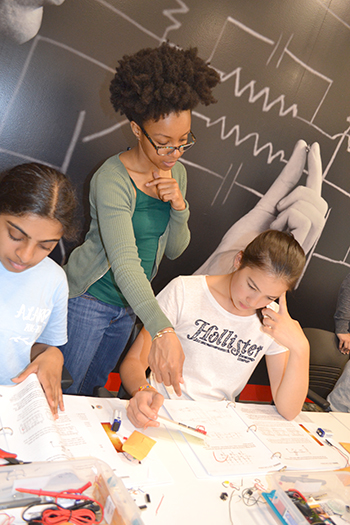
ECE grad student Lonna Edwards works with a camper during the session on building their LED calculators.
When asked why he has continued to head up the GLEE G.A.M.E.S. camp for an impressive eight years, Goddard replies, “It’s a great opportunity to interact with the next generation of students. They are very motivated and excited to be here. It’s a lot of fun to work with them and to see the excitement that they have when they go through the activities.
He adds that he also enjoys working with the Illinois students who are helping with instruction: “It’s very rewarding. It’s two-fold. One, I get to interact with high school students and motivate and inspire them. The second part is that the graduate and undergraduate students that serve as coordinators and assistants, I get to work with them. It’s really good to work with my students and meet new students participating as lab assistants.”
Over the past eight years, Goddard has taught around 150 girls the basics of ECE. About 30 of those girls have enrolled at the University of Illinois for engineering, with eight or nine staying with ECE as their major.
When asked about how he plans to grow GLEE in the next couple of years, Goddard responds, “We don’t really have a strong method of recruiting underrepresented students. We are working at trying to recruit students.” He especially wants to rely less on word of mouth for the camp to get out and instead use more social media outreach to get prospective campers interested.
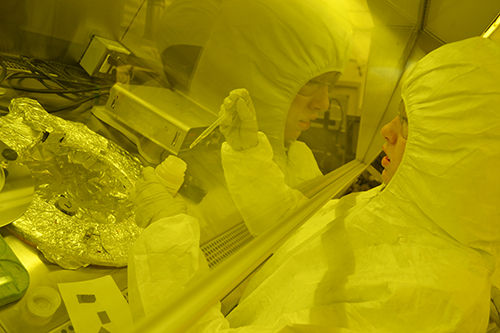
A GLEE camper works in the Optical Lithography Cleanroom
Goddard concludes, “We are thankful for funding and donors." He reports that this past year, individual named scholarships were created based on donations from Gale Beanblossom and Rockwell Collins. "Those have helped three of the students attend this year, so that’s a good sign that our message is getting out and people are willing to contribute.”
The GLEE portion of the G.A.M.E.S. camp looks to be moving in a good direction, and at the end of the week-long camp, the girls were extremely satisfied with what they had learned and the projects they had completed. This reporter hopes that they use their radio phones to keep in touch!
Story by: Nick O'Connell, I-STEM Undergraduate Student Worker and a sophomore in Mechanical Science and Engineering
Photographs by: Elizabeth Innes, Communications Specialist, I-STEM Education Initiative.
More: 8-12 Outreach, GAMES, GLEE, Electrical and Computer Engineering, Summer Camp, Women in STEM, 2017
For additional I-STEM articles on 2017 G.A.M.E.S. camps, please see:
- Campers Build Model Aircraft, Explore Possible Careers During Aerospace GAMES
- BioE GAMES Campers Are Exposed to Bioengineering, Engineering's Grand Challenges, & Encouraged to Stay in STEM
- High School Girls Discover Chemical & Biomolecular Engineering at GAMES Camp
- At ESE GAmes Camp High Schoolers Explore Career Options in Environmental & Sustainable Engineering
- GLAM GAMES Camp Helps High Schoolers Explore Materials Engineering Career Options
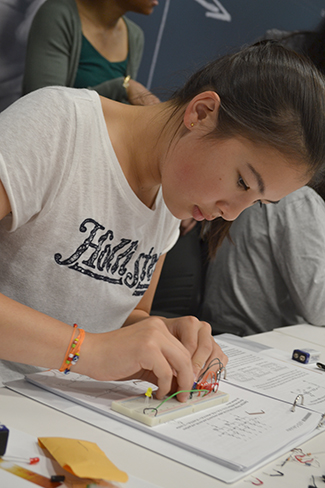
A GLEE camper works on her LED calculator
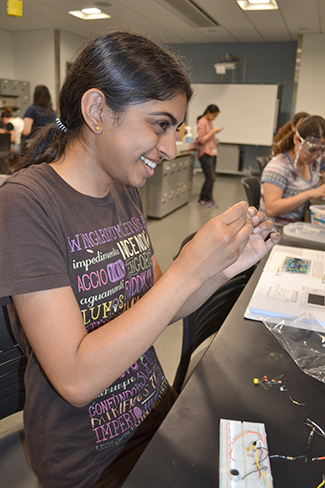
A GLEE camper works to finish building her radio phone.
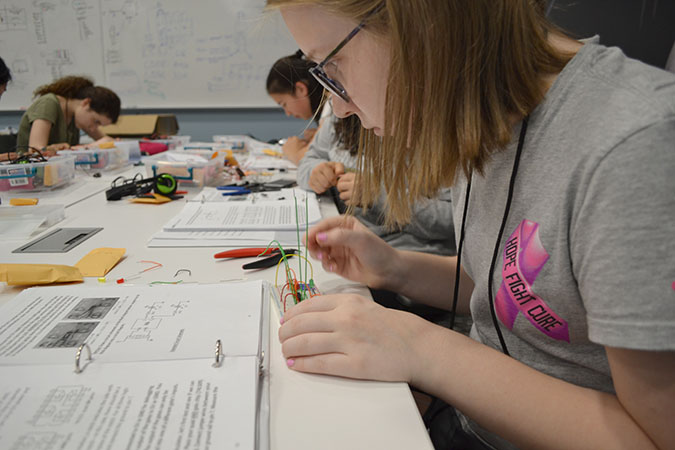
GLEE campers carefully following the steps to building a LED calculator













.jpg)
















